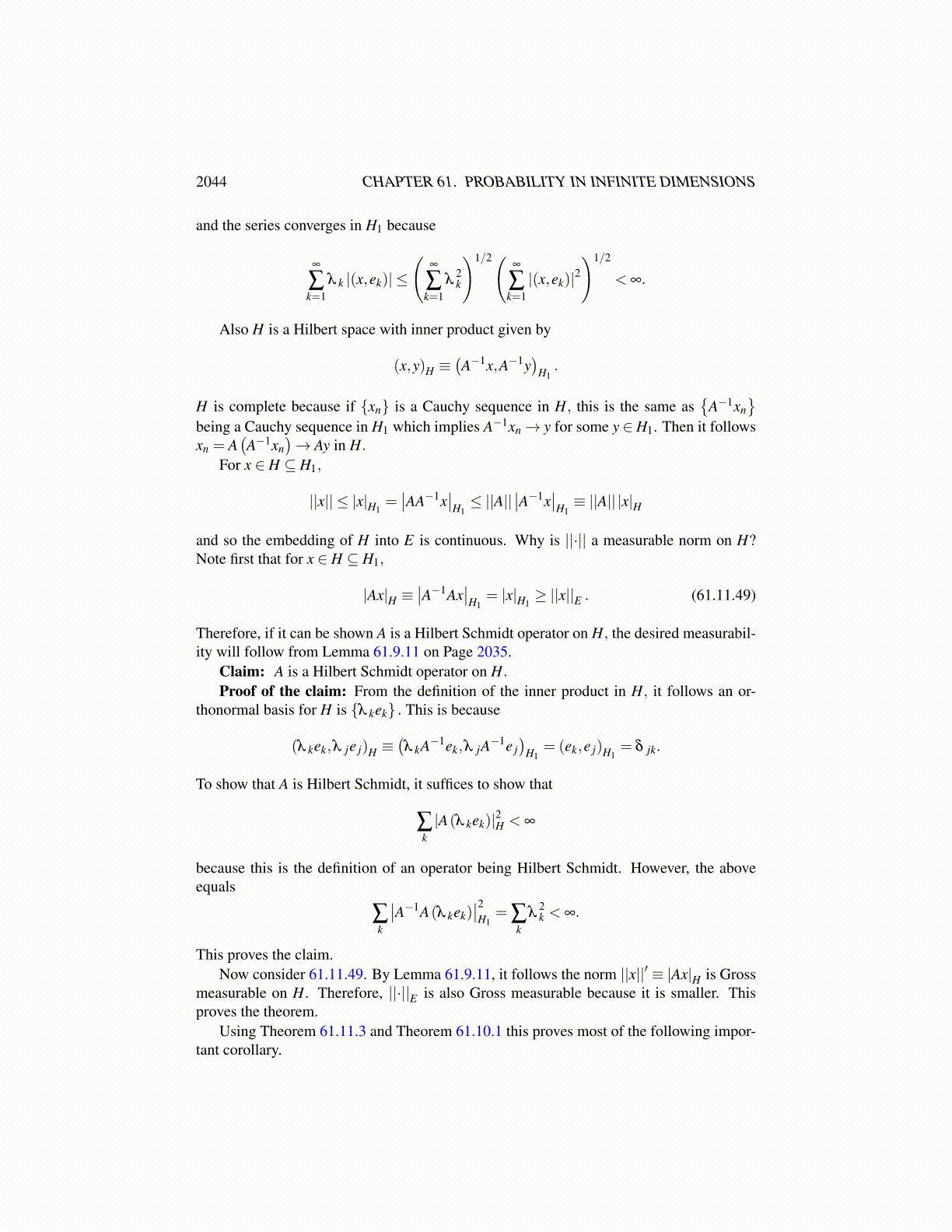
2044 CHAPTER 61. PROBABILITY IN INFINITE DIMENSIONS
Proof: By Lemma 61.11.1, let {z1, · · · ,zn} be a basis for Fn where ∪∞n=1Fn is dense in E.
Then let α1 be such that e1≡α1z1 ∈B(0,1) . Thus β 1e1 ∈B(0,1) whenever |β 1| ≤ 1. Sup-pose α i has been chosen for i = 1,2, · · · ,n such that for all β ∈ Dn ≡ {α ∈ Fn : |α| ≤ 1} ,it follows
n
∑k=1
β kαkzk ∈ B(0,1) .
Then
Cn ≡
{n
∑k=1
β kαkzk : β ∈ Dn
}is a compact subset of B(0,1) and so it is at a positive distance from the complement ofB(0,1) ,δ . Now let 0 < αn+1 < δ/ ||zn+1|| . Then for β ∈ Dn+1,
n
∑k=1
β kαkzk ∈Cn
and so ∣∣∣∣∣∣∣∣∣∣n+1
∑k=1
β kαkzk−n
∑k=1
β kαkzk
∣∣∣∣∣∣∣∣∣∣ =
∣∣∣∣β n+1αn+1zn+1∣∣∣∣
< ||αn+1zn+1||< δ
which showsn+1
∑k=1
β kαkzk ∈ B(0,1) .
This proves the lemma. Let ek ≡ αkzk.Now the main result is the following. It says that any separable Banach space is the
upper third of some abstract Wiener space.
Theorem 61.11.3 Let E be a real separable Banach space with norm ||·||. Then thereexists a separable Hilbert space, H such that H is dense in E and the inclusion map iscontinuous. Furthermore, if ν is the Gaussian measure defined earlier on the cylinder setsof H, ||·|| is Gross measurable.
Proof: Let {ek} be the points of E described in Lemma 61.11.2. Then let H0 denotethe subspace of all finite linear combinations of the {ek}. It follows H0 is dense in E. Nextdecree that {ek} is an orthonormal basis for H0. Thus for
n
∑k=1
ckek,n
∑j=1
d jek ∈ H0,
(n
∑k=1
ckek,n
∑j=1
d je j
)H0
≡n
∑k=1
ckdk